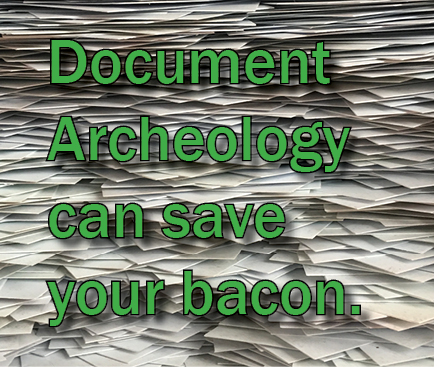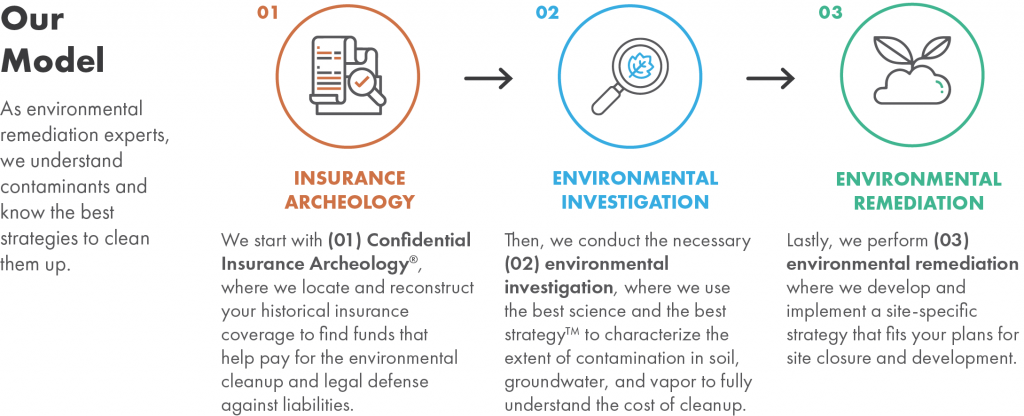
By Jeff Carnahan
Environmental contamination issues could be the death of your dry cleaning business. Depending on the amount of time you’ve been in the industry, you’ve either lived through a cleanup, have a lump in your throat about when the time is going to come to sell the business or property, or you’ve heard the horror stories about the high cost of perc cleanups from your peers.
The bad news is that old releases of perc can cause serious environmental problems and cost into the millions of dollars to handle. The good news is that for a lot of folks, your old Commercial General Liability (CGL) insurance policies can be used to pay for cleanup, plus legal help.
Commercial General Liability Policies
Commercial General Liability (CGL) policies are standard slip-and-fall policies that protect the policyholder against claims made for damages caused by employees, work products and waste products. These policies will typically cover circumstances when a property is damaged by contamination. It is a common misconception that once the policy period is over for a CGL policy, the policy is of no value. That couldn’t be further from the truth, because environmental releases that occurred in the past while those CGL policies were in effect, are still covered by them today.
Most perc releases occurred during the days of transfer machines and the first few generations of closed-loop machines. So, when you think about whether you may have an environmental problem, think about the history of the business and the property, not your current operations.
During the mid-1980s, many insurance companies decided that they wanted to specifically exclude contamination issues from CGL policies, so they started writing a Pollution Exclusion into them. This means that for some businesses, your old insurance may only be good for environmental cleanup if the release(s) occurred prior to 1985 or 1986. Not every insurance company included pollution exclusions at the same time, and not every Canadian Province or U.S. state has interpreted those exclusions the same way. Depending on your specific set of CGL policies and your geographic location, your coverage situation may be unique. You don’t know until you look.
The 3-Step Process
You will need to go through a three-step process to get past your environmental contamination woes without breaking the bank. First, you must find your old insurance policies. Second, investigate the extent of the environmental problem. Third, file a claim against those policies and get started with remediation.

Insurance Archeology
The goal of looking into your old insurance files is putting together your past CGL portfolio. Don’t panic because your old insurance records are lost, destroyed or non-existent. They may well be recoverable.
Insurance archeology is the practice of locating and retrieving the proof of the existence, terms, conditions and limits of lost or destroyed insurance policies. You will not always be able to track down a full policy. Many times, document archeologists are looking for evidence that a policy existed, and this could be through cancelled checks, cancellation notices, declaration pages, etc. You’d be surprised by the information your old records can hold that may result in leads for an insurance archeologist.
It’s not impossible to locate old policy information if you already have purged your old records, but if you have them, they can be a valuable source of information when looking for evidence or leads to find historical coverage. It’s all about knowing what to look for, chasing down leads, and putting the puzzle back together. Even if your own business records are useless, there is a good amount of hope when a qualified insurance archeologist is scouring private and public data sources for the evidence of coverage that you need.
A key point to remember is that if you are on the hook from an environmental liability standpoint, even the policies of former operators and owners will be valuable to you.
Don’t wait until it’s an emergency
Once you and your insurance archeologist have reassembled the portfolio of past CGL coverage at your site, the process of turning them into valuable financial assets can begin. If there is already a demand against you from Environment Canada or your Provincial Agency, it will be necessary to notify the insurance companies of the demand and file a claim. If you have assembled your historical CGL portfolio before you became aware of an environmental problem, which I highly recommend, then you can start the process of finding out if you have a contamination issue. Clearly, knowing that you have CGL coverage in place prior to discovering a contamination problem is gentler on the heart.
Most insurance companies that wrote CGL policies back in the day are well familiar with the process and they know that they may be tapped when latent environmental claims come to light. This does not necessarily mean that they will be happy to hear from you. It is common that hiring an attorney who has expertise in insurance coverage matters makes the process run much more smoothly. These legal costs will not be covered by the old CGL policies.
The average cost of an environmental contamination cleanup is over $1 million per site. When you consider that statistic, can you afford not to get your business’s historical CGL insurance assets in order?

Jeff Carnahan, LPG, is the President of EnviroForensics. He’s a geologist and a scientist, and has been an environmental consultant for over 20 years. For more information on insurance archeology, visit enviroforensics.com or call (+1) 866-888-7911.




